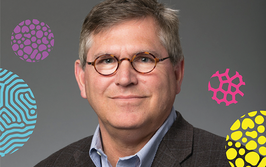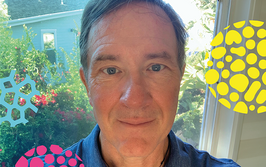
Ours is to Question Why…
…and what, and how. If curiosity is a fundamental part of good science, how do we nurture it – in ourselves and in others?
As researchers, we are accustomed to hearing about big personalities, exciting results, and revolutionary discoveries. However, the process by which great scientists unearth their claims to fame seems shrouded in mystery – and it’s outright intimidating to aspiring scientists. One concept, though, appears to link all major breakthroughs: an initial spark of curiosity that, through dedication and perseverance, grows into a fully developed research project. We wanted to discover more about this leap from initial fascination to scientific innovation. Rather than discussing only the methodology and results of their research, we wanted details of the creative journey other scientists have taken to develop a project from conception to fruition. In particular, we wanted to learn about early preconceptions, unexpected developments and, most of all, how excitement about unknown chemistry came to shape the story’s development.
We asked top analytical scientists, who between them have worked across government, academia and industry, to explore the nature – and importance – of curiosity.
Expect the Unexpected
An interview with Rick Yost
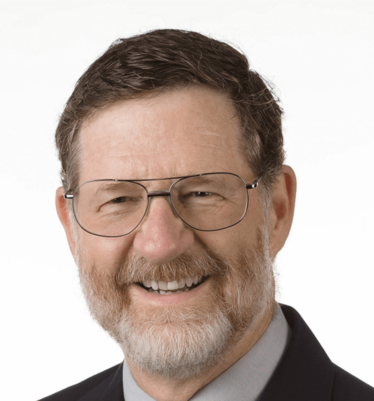
Children are curious by nature. There are always those kids who take apart the toaster to see how it works, and I think we should promote that, making sure we don’t quash that desire in school. It’s unfortunate that kids rarely get chemistry sets for Christmas anymore (or do experiments in the basement with dangerous chemicals, like I did!). I was always a curious young person; playing with electronic components in the backyard probably generated my interest in instrumentation. I was fortunate that for all four years of high school I was an assistant in a biology lab, and was able to do routine tasks, such as preparing reagents and fixing microscopes, but was also encouraged to try different experiments. For example, I built an eight-foot-long terrarium as a closed biosphere, with salamanders and insects living inside.
Curiosity is what leads us to new scientific discoveries, and what creates passion in young scientists. I think we need to pique their curiosity and then let that drive where they are going. But I have concerns about science education today – when we teach younger students about science, we are too apt to give them a recipe; if they do the recipe right, they get the right answer. I don’t think that breeds curiosity. Similarly, much of the way we conduct research today is built around forming and then proving a hypothesis, instead of letting curiosity take the driving seat.
With undergrads, the classroom is where, ideally, we teach critical thinking. Oftentimes we don’t teach it very well, sharing facts without context and without explaining why students should care – beyond getting a passing grade on the exam.
The primary reason for educating PhD students should be to produce outstanding scientists – and on the way we should be producing outstanding science. Only allowing them to be a set of hands in a laboratory, washing bottles or taking data, does a poor job of preparing students to be successful scientists in the future. At the graduate level, students should have developed a curiosity and ability to devise and direct projects, and should pursue their own ideas and questions – at least for part of the time! If we’re going to produce great scientists, it’s important for them to discover for themselves how the scientific method works. The best faculty are not only productive in their own work, but also produce outstanding young scientists who are filled with curiosity and passion for their work.
Real scientific advances rarely come about by slogging through experiments in a linear fashion. We have to provide opportunities for an unexpected result – that’s where real discoveries come from. You need the freedom to follow the advances in the field as improvements are made, moving forward as the instrumentation does.
In grad school, my PhD supervisor, Chris Enke, was willing to let me pursue something very different from his own research. In an instrumental analysis lecture when I was an undergrad, Bonner Denton passed a quadrupole mass filter around. He talked about it as a new kind of mass spectrometer, but also mentioned other things you could do with it – transmitting ions, for example – and to me that was a fascinating alternative to current mass spectrometers. After a fortuitous conversation late one night, Chris and I came up with the crazy idea of building a triple quad – and he told me I should write a grant proposal. It clearly defied the accepted knowledge of mass spectrometrists at the time – that’s the advantage of coming in with a fresh perspective, not steeped in folklore. It’s one of the reasons companies hire young scientists – it’s not just because of the facts they know, but because they tend to be naturally curious, passionate and innovative (not that older scientists can’t be all of those things!).
The popular saying, “It takes a village,” applies to educating young scientists – and to conducting research. These days, science tends to require interdisciplinary teams, so part of graduate education should be developing the skills to work in that way. To me, the ideal research professor gives students enough guidance to get them going, then gets out of their way and lets them discover things on their own – nudging, pushing or pulling where necessary.
Encouraging students’ curiosity and freedom helps you reinvent yourself, too. In my own case, my crazy idea of doing something with a quadrupole mass spectrometer completely changed my PhD supervisor’s career – he became a full-time mass spectrometrist and went on to be President of the American Society for Mass Spectrometry, something that would never have happened if this student hadn’t wandered through his life. Not that I knew much about mass spec at the time – but I certainly was curious!
Cultivating Confidence
An interview with Suraj Dhungana
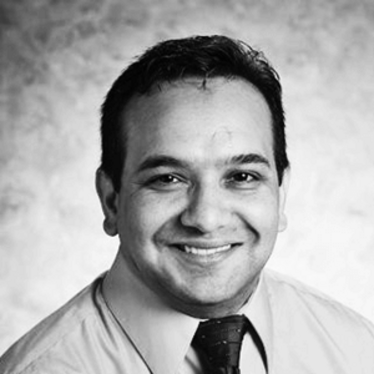
I’m a chemist by training because of my curiosity. It started in high school; the teacher would give us data and say, “Experiment A generated these results. B generated these results. Why do you think they are different?” If we didn’t have an answer right away, she would wait until we came up with hypotheses. And that is when I realized how important it is to be curious without limits.
The educational systems we are exposed to really drive how we think. I’ve studied in Nepal, Italy and the USA – and I’ve seen a startling difference in the way curiosity is encouraged (or not). In Nepal, you had to memorize and spit things out; you were examined based on what you could remember, not on your understanding. In Italy, the style of learning was the biggest adjustment I had to make; I soon realized that some kind of preparation was needed before class, if I was to come up with answers. Being curious about the subject matter drove you. Here in the US it was a combination of both.
I believe curiosity is in all of us, but it has to be nurtured – and it’s easy to stifle it. My children are truly curious to learn – they enjoy finding things out. As we get older, we too often lose that. It’s the same early in a science career, when you are figuring out how things work; taking your time to find the right balance, and the right topic is really important in driving curiosity. If we were to stifle curiosity in either setting, we would not be doing those students justice.
Nurturing curiosity takes patience because we work in such a fast-paced, result-oriented environment. With summer internship students, you can be so driven to help them to get a project done, that you forget to figure out where their curiosity lies. I used to sit with the student on their first day and talk about what they have to deliver. Crucially, I would tell them I don’t really care how they get there. They could ask as many questions as they wanted and, as long as they come up with something, I would be happy.
Having worked in academia, government and industry, I think curiosity is appreciated across the sectors – but how they are supported differs. Academia used to be the place for the curious – you could devote your time to following your ideas – but now, if you don’t publish enough papers or get enough grants, your curiosity doesn’t mean anything. Working in the National Institute of Environmental Health Sciences (NIEHS) was a great time for me; I worked closely with two great guys who had probably never written a grant but were super curious – there I had time to try new experiments, design new instruments, and ask questions.
In industry, we do side projects to satisfy our curiosity – you need to manufacture those opportunities. In a CRO, I worked on revenue-generating and non-revenue-generating projects. The latter meant working on things we were curious about, that we could potentially develop into a technology in future and offer a new service to the commercial business. Every time curiosity drives something, we’re learning something new, figuring out something that we can implement in the workplace. Of course, time management is important, and I figured out a way to carve out my own time and align that with the longer-term goals of the company, which was important to keep curiosity alive.
If you have an idea, the science should not be limited by what’s available to you. What’s available to you should be dictated by your science. That’s the way scientific curiosity advances. In my case, I was not afraid. I probably did many things I wasn’t supposed to do in the lab – my PhD mentor would agree – but without that curiosity, without making the choices I did, I wouldn’t have gone anywhere. In fact, three of my papers wouldn’t have been published!
Creativity in Context
An interview with Zoltan Takats
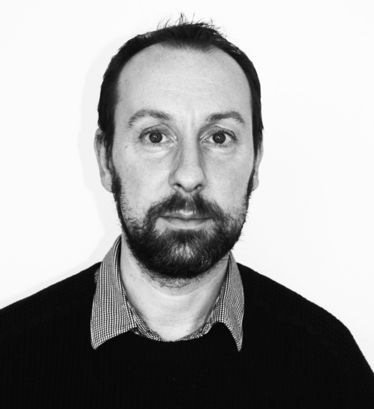
Curiosity is very important in instrument development – and it has a lot to do with creativity. Some people say that science is an art, and that, by doing research, scientists are creating the equivalent of an artist’s painting. I disagree. There is a fine line between art and science, but the key difference is that science is systematic – whereas you could argue that good art isn’t! With art, you need inspiration, and you don’t care about the context – that helps your brain create something new. The inspiration for the novel One Hundred Years of Solitude appeared in Gabriel Garcia Marquez’s mind in a single second, and all he had to do was scribble it down. Science doesn’t always work that way – in most cases, it’s more like building a Lego house. Sometimes you can have a huge impact on how the finished building will look – though having been a scientist for 20 years I can say that rarely happens! To continue the building metaphor; if you are a curious person, you take a step back and look at the building as a whole, try to have an understanding of the system behind it and create a hypothesis for yourself: why does it look like that? Non-curious people might see a rectangular gap and merely attempt to fill it.
Of course, you can be systematically creative but still pursue projects that are driven by passion; inventors often claim that their biggest ideas are driven by passion. I tell people that being a postdoc is the best time in your life – you have a young brain, you have lots of good ideas, and you’re spending someone else’s money. DESI was my hobby in the lab as a post doc – my supervisor, Graham Cooks, tried to convince me to go back and focus on my final project, instead of spending my time and his funding on something else! But while that was a passion project, it was practical at its root.
At the moment, I have dozens of questions in my mind that I desperately want to seek answers to – but I don’t have funding to do them and, unfortunately, I can’t go out to funders and say, “Last night a question popped into my mind – will you give me half a million dollars to pursue it?” If there was an infinite amount of resources, all research would be around passion projects – but, as it is, they are much more about opportunity.
Dogma says that there are creative people and non-creative people; curious and non-curious people. That is just not true; deep inside, everybody has curiosity and creativity, and everyone is able to enjoy creating something new. As I see it, there are two problems: first, there is enormous cultural suppression of curiosity and creativity in the 21st century; and second, people don’t find their own interests, so sometimes pick the wrong subject, instead of pursuing something where they can exercise their creativity.
It’s the lack of curiosity that then forms the bottleneck for many students. They might be interested in analytical chemistry and feel they can help other people, but in the current world, where questions are answered even before you think of them, all the curiosity is killed – or at least suppressed – at a shockingly young age. Now, supervisors have to train students to be curious. We have to help them rediscover the curiosity they had as children and point it towards scientific problems.
Postdoctoral researcher at the University of Florida, Gainesville, Florida, USA.
Graduate student at the University of Florida, Gainesville, Florida, USA.


